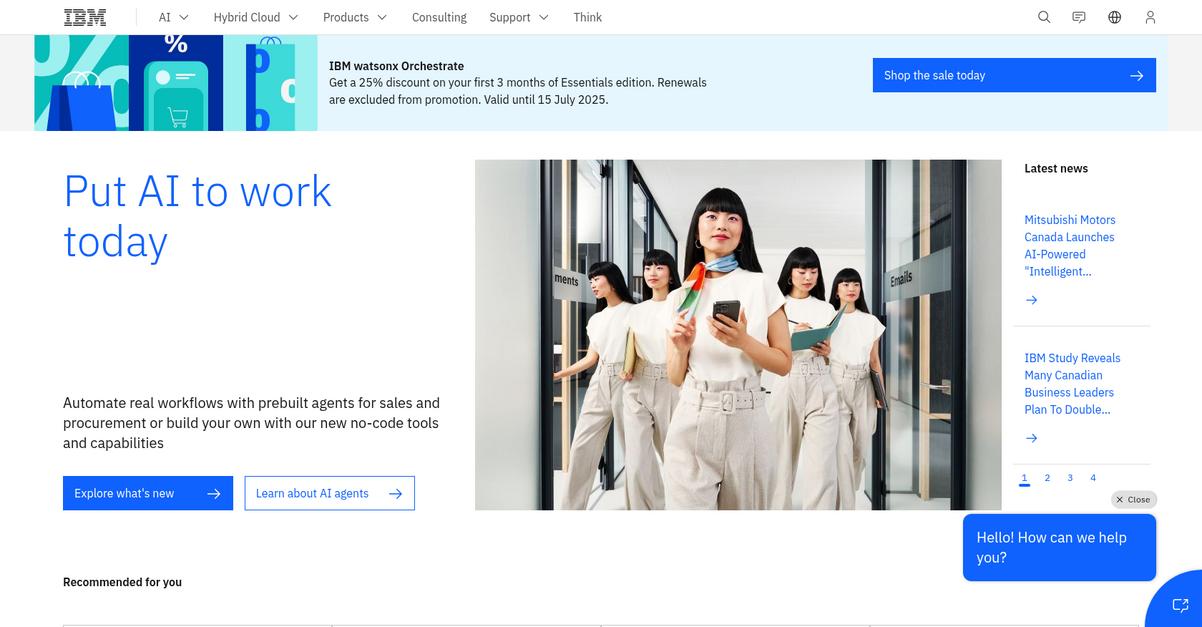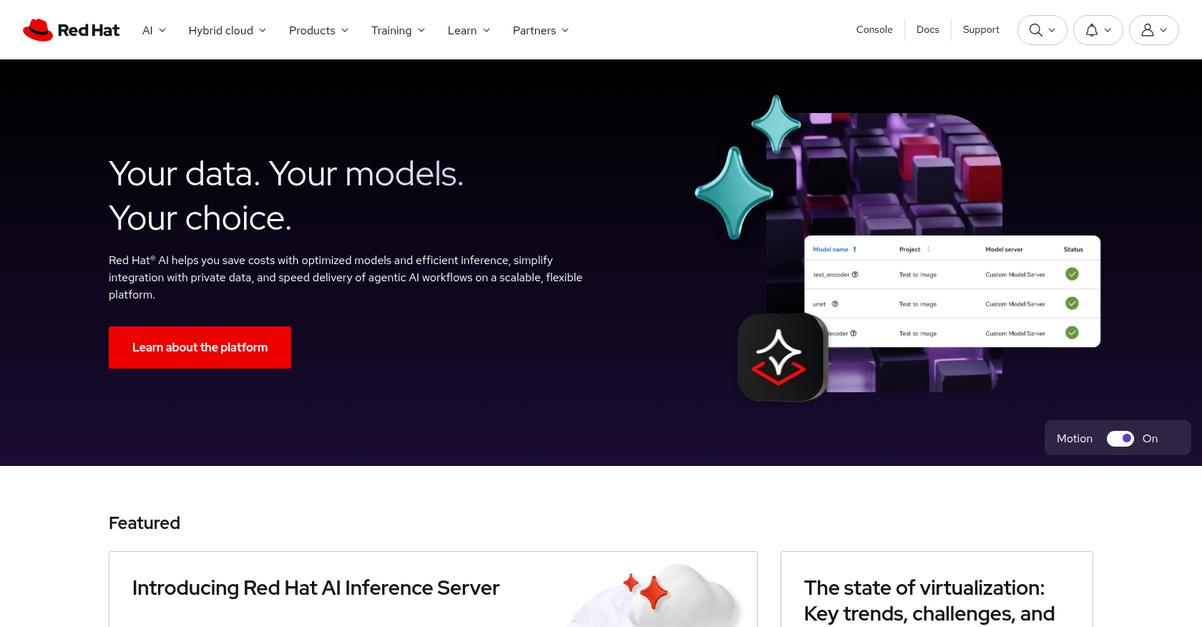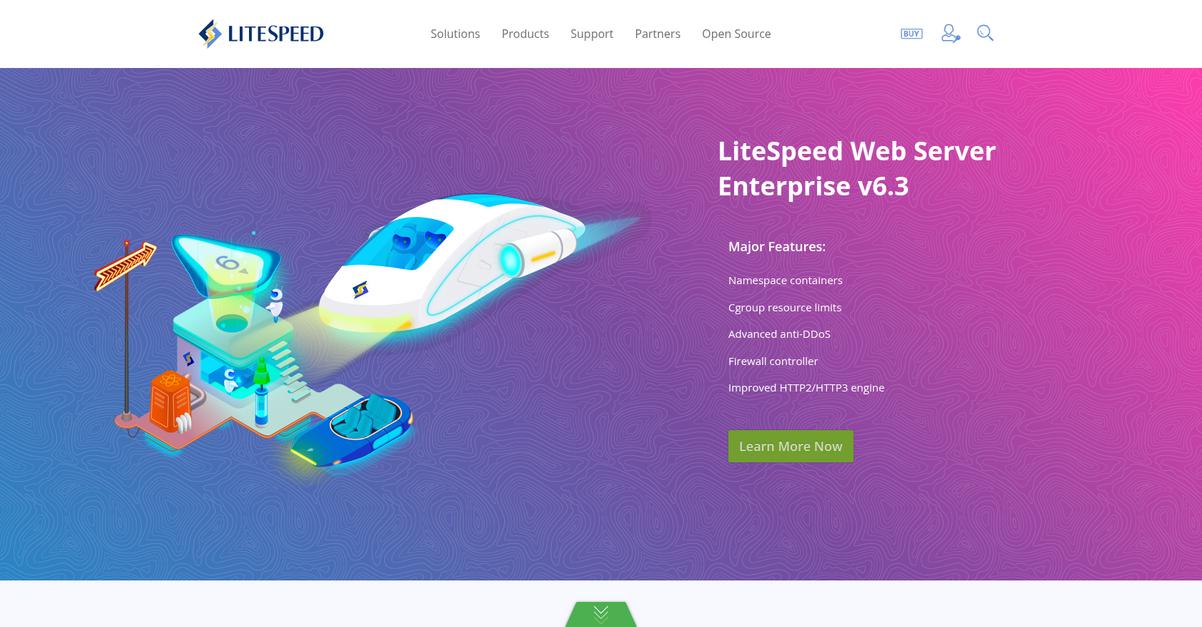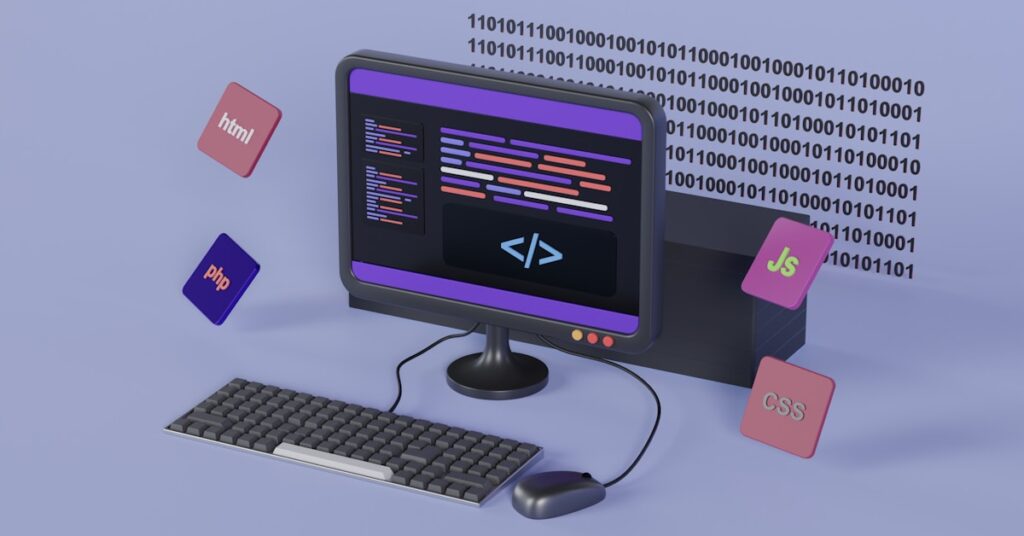Struggling with slow and costly apps?
You’re trying to boost performance while keeping a close eye on the budget, but it feels like you’re constantly compromising one for the other.
The pressure from stakeholders is immense. Choosing the wrong server can cripple your operations, leading to frustrating downtime and blowing past your financial forecasts.
This decision directly impacts everything from your developer workflows to the end-user’s experience. The ripple effects of a poor choice are felt across the entire enterprise.
But the right software provides a solid foundation for scalable performance and cost control, giving you the best of both worlds without the usual trade-offs.
In this guide, I’ll show you the best application server software I’ve found for cutting costs while simultaneously boosting your system’s overall performance.
You’ll discover solutions that improve uptime, secure your infrastructure, and streamline your team’s DevOps workflows for sustainable, future-proof growth.
Let’s find your perfect fit.
Quick Summary:
| # | Software | Rating | Best For |
|---|---|---|---|
| 1 | IBM → | Large enterprise IT teams | |
| 2 | Red Hat → | Hybrid cloud enterprises | |
| 3 | The Apache Software Foundation → | Large open-source companies | |
| 4 | LiteSpeed Technologies → | Mid-size web hosts | |
| 5 | Payara → | Enterprise Jakarta EE users |
1. IBM

Struggling with application server complexity and costs?
IBM offers AI-powered automation and no-code tools to streamline workflows and boost performance. This means you can address current operational hurdles.
Their solutions aim to move your AI projects from pilots to production, helping your business go from AI projects to sustained profits.
It’s time to build smarter.
IBM helps you accelerate IT processes with AI-powered automation. You can effortlessly integrate AI agents into your business operations, helping your team make data-driven decisions. This includes the ability to handle mission-critical workloads while maintaining security, reliability, and control of your entire IT infrastructure. Additionally, IBM provides industry-first software to unify agentic governance and security, ensuring your AI deployments are both powerful and compliant. Plus, you can run your applications, analytics, and generative AI with databases on any cloud, providing flexibility and scalability.
The result is optimized resource management and streamlined DevOps workflows.
If you’re also streamlining operations, my guide on navigating complex compliance covers how to do it effectively.
Key features:
- AI-powered automation: Automate real workflows with prebuilt agents for sales and procurement, or build your own with no-code tools and capabilities.
- Comprehensive security and governance: Secure your hybrid cloud and AI with data and identity-centric cybersecurity solutions, including unified agentic governance and security.
- Scalable compute and database solutions: Handle mission-critical workloads with robust compute and servers, and run applications, analytics, and generative AI on any cloud.
Learn more about IBM features, pricing, & alternatives →
Verdict: IBM offers a robust suite of tools that make it suitable as best application server software, particularly for IT directors focused on cutting costs and boosting performance. Its emphasis on AI-powered automation, comprehensive security, and scalable solutions directly addresses the pain points of managing complex IT infrastructures and achieving clear ROI.
2. Red Hat

Struggling with application server complexity and high costs?
Red Hat helps you simplify application development, deployment, and management, ensuring consistency across diverse operating environments. This means you can cut costs and boost performance.
Their portfolio, including Red Hat OpenShift and Ansible Automation Platform, allows you to build and deploy apps at scale while modernizing existing ones. You can tackle complex IT environments more efficiently.
Here’s how to streamline your operations.
Red Hat addresses these challenges by offering a robust hybrid cloud infrastructure and application services. You can deploy workloads closer to the source with their edge technology, which is key for modern applications.
Their Red Hat OpenShift platform allows you to build, modernize, and deploy applications at scale, offering flexibility for your IT operations. This helps you achieve consistency across various operating environments, from on-premise to cloud and edge deployments, ensuring your applications run optimally wherever they reside. Additionally, with Red Hat Ansible Automation Platform, you can implement enterprise-wide automation to unite your tech, teams, and environments, leading to significant time and cost savings. This comprehensive approach ensures secure, reliable, and high-performing application delivery for your enterprise.
If you’re also looking into optimizing your IT environments, my article on best vulnerability assessment tools covers important security aspects.
Boost performance and cut your costs.
Key features:
- Hybrid Cloud Infrastructure: Support hybrid cloud innovation on a flexible operating system and develop and deploy AI solutions across hybrid cloud environments for optimized performance.
- Application Modernization: Build, modernize, and deploy apps at scale with Red Hat OpenShift, ensuring quick and cost-effective delivery of IT services.
- Enterprise Automation: Implement enterprise-wide automation using Red Hat Ansible Automation Platform to scale operations and unite your diverse tech, teams, and environments.
Learn more about Red Hat features, pricing, & alternatives →
Verdict: If you’re seeking the best application server software that supports hybrid cloud innovation, application modernization, and enterprise-wide automation, Red Hat is a strong contender. Their solutions, trusted by over 90% of U.S. Fortune 500 companies, help you simplify app management, enhance security, and achieve significant cost savings.
3. The Apache Software Foundation

Struggling with diverse application server choices and security?
The Apache Software Foundation delivers ubiquitously used open-source software, providing a robust solution for your enterprise. This means you can confidently balance your security requirements with cost efficiency.
Their consensus-driven, open development process ensures enterprise-grade projects serving as the backbone for your most visible applications, reducing implementation risks significantly.
Looking for reliable uptime and performance?
The Apache Software Foundation stewards hundreds of freely available projects, ensuring critical uptime and scalable architectures. You get to leverage widespread adoption and mature, community-driven development.
Their strong emphasis on community over code ensures you benefit from a collective ethos that breeds better software, streamlining your DevOps workflows. Additionally, their infrastructure status and statistics, including uptime reports, offer transparent performance metrics. Plus, projects like OpenServerless, a cloud-agnostic platform based on Kubernetes, ensure future-proof infrastructure.
This directly optimizes resource management for your sustainable growth.
While focusing on efficient infrastructure, boosting remote teams through modern communication tools is also vital for many businesses.
Key features:
- Open Source Ubiquity: With over 320 active projects and 8,400 committers, their software is widely adopted, ensuring stability and continuous innovation.
- Consensus-Driven Development: A refined 20-year open development process produces long-lived, reliable software, reducing your budget pressures and implementation risks.
- Enterprise-Grade Projects: The foundation develops and incubates hundreds of freely available, enterprise-grade projects, providing the backbone for critical applications.
Learn more about The Apache Software Foundation features, pricing, & alternatives →
Verdict: The Apache Software Foundation, with its robust open-source projects like Tomcat and OpenServerless, provides enterprise-grade solutions perfect for organizations seeking the best application server software. Their focus on community-driven development and transparency in infrastructure statistics directly translates to optimized resource management and reliable uptime for your critical applications.
4. LiteSpeed Technologies

Struggling with application server performance and escalating costs?
LiteSpeed Technologies offers a robust solution designed to address your most pressing performance and security concerns. This means your IT directors can finally achieve both speed and cost efficiency.
The software directly tackles common IT headaches by providing advanced anti-DDoS and firewall controller capabilities, ensuring your applications remain secure and operational. It’s built to give you the confidence you need.
Boost your application server’s performance.
LiteSpeed Technologies addresses your challenges by offering superior performance through features like the fastest built-in cache and an improved HTTP/2 and HTTP/3 engine. This translates directly into quicker load times and a smoother user experience, improving your overall efficiency.
The LiteSpeed Web Server, with its ESI-enabled server-level caching, delivers unmatchable speed and accuracy, ensuring your applications run optimally. Additionally, their QUIC.cloud CDN accelerates all WordPress content globally, not just static files, providing complete acceleration for your critical applications. This comprehensive approach ensures that whether you’re dealing with WordPress or other web apps like Magento, Joomla, or Laravel, your caching and optimization needs are fully covered, enhancing performance and user satisfaction.
It’s a smart investment to increase performance.
While this software helps cut costs, you might also find insights in my guide on best workforce optimization software to further enhance savings.
Key features:
- Superior Performance and Caching: Delivers unbeatable application performance with the fastest built-in ESI-enabled server-level cache for robust speed and accuracy.
- Advanced Security Measures: Includes namespace containers, cgroup resource limits, advanced anti-DDoS protection, and a firewall controller to secure your applications.
- Next-Gen Protocol Support: Features an improved HTTP/2 and HTTP/3 engine, providing rock-solid stability and future-proof performance for your web applications.
Learn more about LiteSpeed Technologies features, pricing, & alternatives →
Verdict: LiteSpeed Technologies offers a compelling solution for organizations seeking the best application server software. Its focus on security, performance through advanced caching, and compatibility with popular control panels makes it ideal for cutting costs, boosting performance, and ensuring reliable uptime without requiring expensive hardware upgrades.
5. Payara

Struggling with complex application server choices and costs?
Payara offers a business-ready architecture, designed to enhance your Jakarta EE and MicroProfile projects.
This means you can deploy your mission-critical applications swiftly and securely, whether you’re dealing with monolith, microservices, or hybrid architectures.
You need solutions that truly perform.
Payara’s application server facilitates rapid development and deployment, saving your team valuable time.
Here’s how: you can deploy applications anywhere with Payara’s secure and scalable server, reducing infrastructure and maintenance costs with out-of-the-box container support.
Additionally, Payara Starter streamlines project creation, integrating with popular IDEs and allowing customization for JDK versions and Docker support, which enables you to quickly get your projects up and running, focusing on business logic rather than server issues. The result is a smoother, more efficient DevOps workflow.
While we’re discussing application deployments, understanding best SharePoint Migration Tools can be helpful for ensuring data integrity and compliance during platform transitions.
Key features:
- Rapid Development & Deployment: Build Jakarta EE applications quickly and deploy them securely and scalably, supporting monoliths, microservices, or hybrid setups.
- Cost-Effective & Flexible Pricing: Benefit from more affordable and flexible pricing options that don’t charge in core blocks, helping you manage your budget better.
- Expert Support & Long-Term Stability: Gain access to direct engineer support and a 10-year software lifecycle, ensuring reliable uptime and assistance for your mission-critical apps.
Learn more about Payara features, pricing, & alternatives →
Verdict: Payara stands out as a strong contender for the best application server software, enabling IT directors to cut costs and boost performance. Its focus on Jakarta EE and MicroProfile, coupled with robust migration services and direct engineer support, provides IT leaders with the security and scalability needed to future-proof their infrastructure, as seen in the BMW Group’s successful migration.
6. WildFly

Struggling with complex application server management?
WildFly offers powerful, modular, and lightweight capabilities to help you simplify operations and boost performance. This means you can build amazing applications more efficiently.
WildFly addresses these challenges through centralized, user-focused configuration, ensuring easy comprehension without exposing internal server wiring. This streamlined approach reduces complexity.
You can finally achieve robust security and performance.
WildFly solves this by offering diverse management capabilities, including a CLI, web-based admin console, and REST API, allowing for custom automation with your preferred tools. This empowers your team to optimize resource management.
Its modular design uses JBoss Modules for true application isolation, hiding server implementation classes and linking only necessary JARs. This improves security and performance. Additionally, WildFly’s aggressive memory management, with a stateless, client-driven administration console, ensures instant startup and minimal server memory use, leaving more headroom for your application data and supporting higher scalability, even on small devices.
The result is optimized resource management and cost savings.
While we’re discussing robust security, understanding enterprise legal management can further mitigate risks.
Key features:
- Centralized and intuitive configuration: Simplifies management with a user-focused approach that consolidates all settings, making them easy to comprehend and control through various access methods like a CLI or web console.
- True application isolation and modularity: Utilizes JBoss Modules to provide robust isolation between applications, ensuring only necessary JARs are linked and improving classloading performance regardless of library versions.
- Aggressive memory management and lightweight design: Minimizes heap allocation and object churn, allowing the server to run efficiently with stock JVM settings, support small devices, and offer higher scalability.
Learn more about WildFly features, pricing, & alternatives →
Verdict: WildFly stands out as a strong contender for the best application server software due to its powerful, modular, and lightweight architecture. Its focus on simplified configuration, efficient memory management, and standards-based design helps you cut costs, boost performance, and ensure future-proof infrastructure for your scaling enterprise.
7. Parallels

Struggling with application server complexity and costs?
Parallels simplifies virtual application and desktop management, delivering solutions for on-premises, cloud, and hybrid environments. This means you can deploy your critical applications efficiently across diverse infrastructures.
The result? Streamlined operations and enhanced flexibility for your IT environment.
Parallels offers robust business solutions for flexible virtualization and seamless security. You can manage virtual apps and desktops with ease, whether your setup is on-premises, in the cloud, or a hybrid model. This approach also enhances security for accessing SaaS and enterprise web applications remotely, protecting your critical data.
The platform boosts developer productivity through secure multi-platform access, enabling isolated testing environments. Plus, it simplifies Azure Virtual Desktop deployments with cost-effective, out-of-the-box support for AVD, hybrid, and on-premises setups, ensuring a smoother cloud transition. This comprehensive approach helps you cut costs and boost performance.
Key features:
- Flexible Virtualization: Seamlessly deploy and manage virtual applications and desktops across on-premises, cloud, and hybrid infrastructures to meet diverse business needs.
- Enhanced Security: Provides heightened security for remote access to SaaS and enterprise web applications, protecting sensitive data and ensuring compliance.
- Cross-Platform Productivity: Boosts developer productivity through secure multi-platform access for development and isolated testing, supporting various operating systems.
Learn more about Parallels features, pricing, & alternatives →
Verdict: Parallels stands out as a strong candidate for the best application server software, enabling IT directors to cut costs and boost performance. Its ability to simplify virtual app management across hybrid environments, enhance security for remote access, and improve developer productivity directly addresses the core pain points of scaling enterprises.
Conclusion
Ready to fix your app performance?
Choosing the right application server is a high-stakes decision. A bad pick not only cripples performance but can also blow past your financial forecasts.
The pressure from stakeholders is immense. You’re expected to guarantee flawless uptime and robust security, all while keeping a tight rein on spending. It’s a constant, difficult balancing act.
Here is my top recommendation.
From everything I’ve reviewed for scaling enterprises, IBM truly stands out. Its AI-powered automation directly tackles operational complexity and high costs.
I’m impressed by their ability to handle mission-critical workloads while ensuring security, reliability, and control. It’s the best application server software for future-proofing your entire IT infrastructure.
For additional insights into improving operational efficiency, my analysis of best board meeting software provides valuable perspectives.
I suggest you explore IBM’s AI solutions and see how their automation can transform your workflows and accelerate your data-driven decisions.
You will build a smarter, more efficient system.






